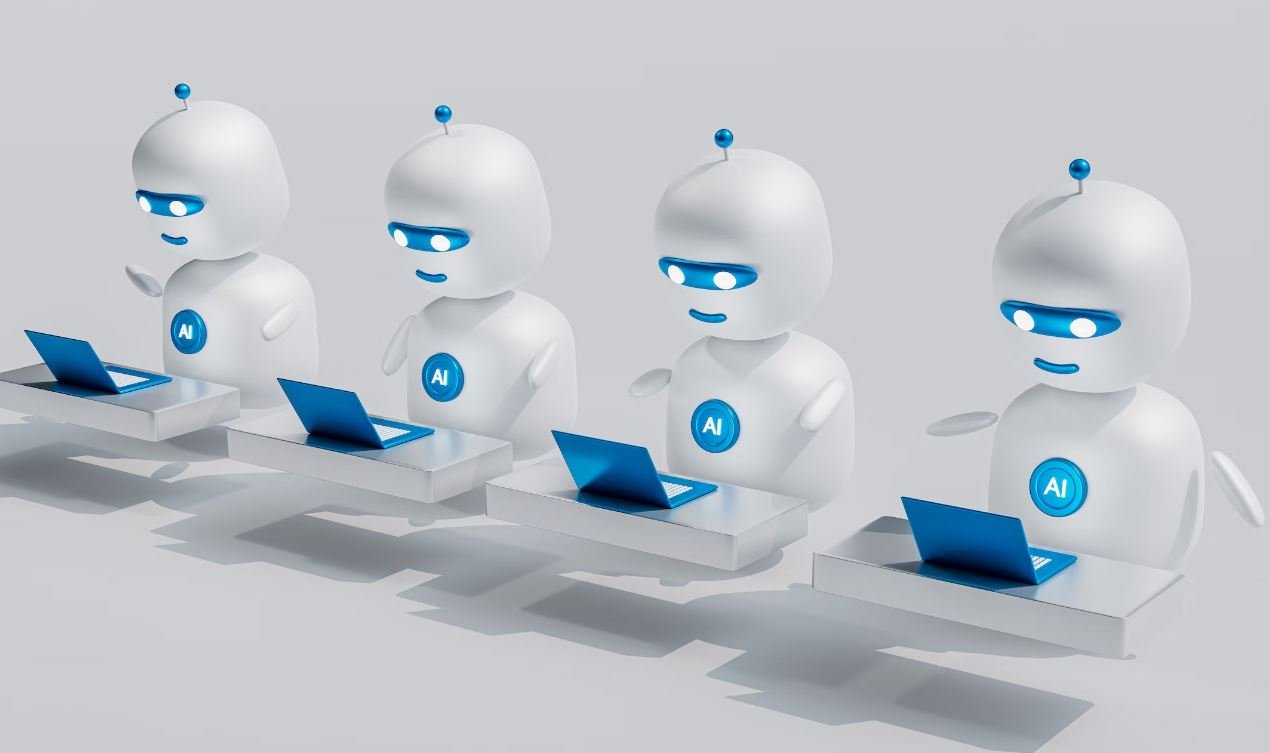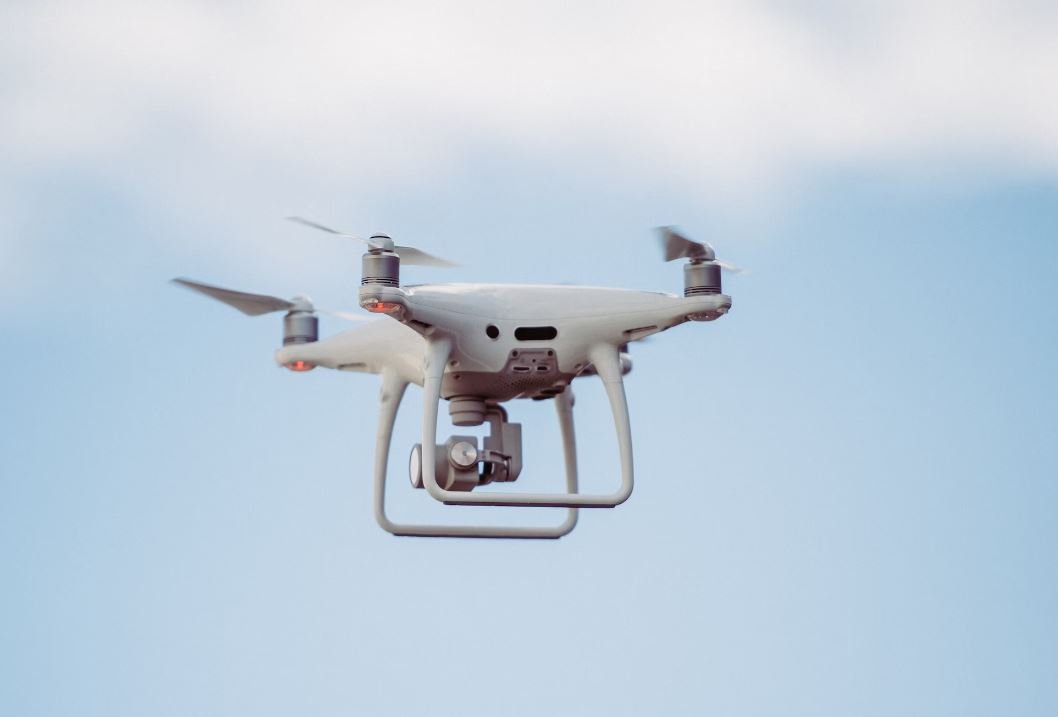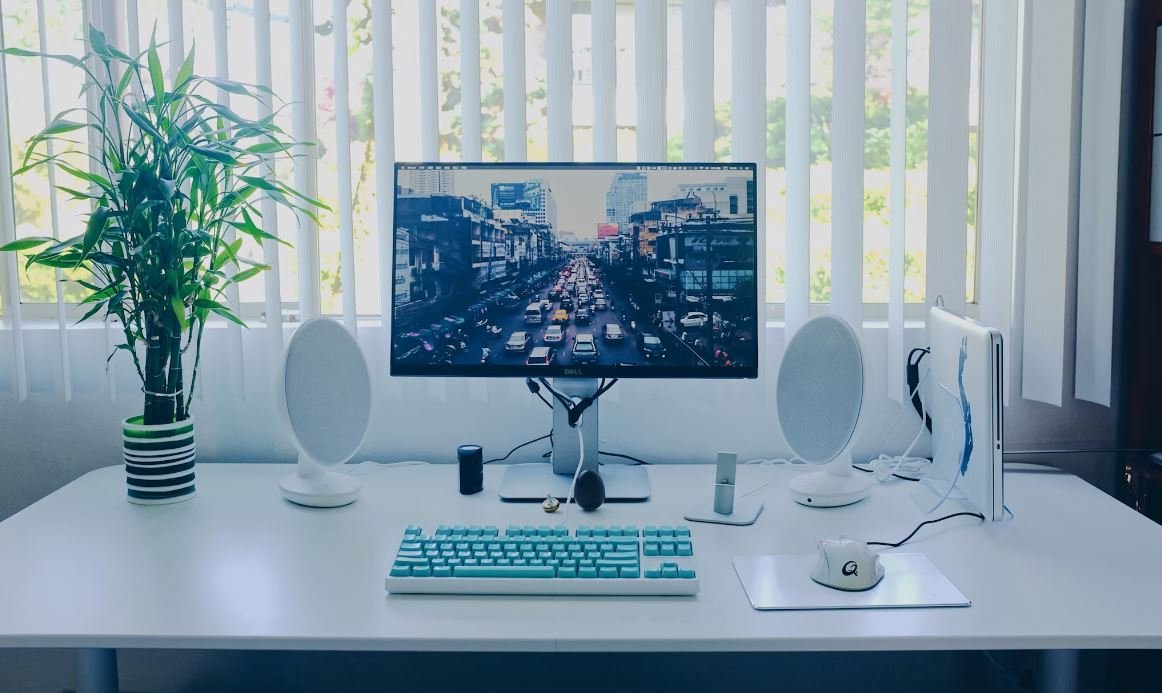Deepfake vs CGI
Introduction
With the advancement of technology, both deepfake and CGI have gained popularity in various industries, especially in the entertainment world. Deepfake, using artificial intelligence, can manipulate or create hyper-realistic videos, while CGI (Computer Generated Imagery) relies on computer graphics to generate visual effects in movies and animations. Despite their similarities, deepfake and CGI differ in several aspects and serve different purposes.
Key Takeaways
- Deepfake utilizes AI to manipulate or create realistic videos, while CGI relies on computer graphics to generate visual effects.
- Deepfake has raised concerns regarding privacy, misinformation, and the potential for misuse, while CGI is commonly used in the film industry for visual effects.
- Deepfake technology is rapidly advancing, making it harder to detect manipulated videos, whereas CGI has established workflows and techniques.
Understanding Deepfake
**Deepfake** technology leverages complex machine learning algorithms to **synthesize or manipulate** videos by swapping faces, altering expressions, or even creating entirely **fake footage** that appears genuine. These convincing manipulations often involve training on vast amounts of data and require significant computational power. *This technology has gained notoriety for its potential to spread misinformation and the associated ethical concerns.*
Overview of CGI
**CGI (Computer Generated Imagery)** is widely used in the film industry, television, and gaming to create **realistic visual effects** that would be difficult or expensive to produce practically. Using specialized software and computer-generated models, artists can create intricate scenes, lifelike characters, and seamless landscapes. *CGI has revolutionized the entertainment industry by enabling unparalleled creativity and imagination in storytelling.*
Comparing Deepfake and CGI
| Aspect | Deepfake | CGI |
|---|---|---|
| Technology | Uses AI algorithms to manipulate videos | Relies on computer graphics for visual effects |
| Main Application | Creating highly realistic or fake videos | Enhancing visual effects in films and animations |
| Ethical Concerns | Potential for misinformation and privacy invasion | None, when used responsibly in the entertainment industry |
Advancements and Limitations
As deepfake technology continues to advance, so does its potential for misuse. It has become more challenging to distinguish between **real and fake videos** due to the sophistication of deepfake algorithms. On the other hand, **CGI** has established workflows and techniques for creating stunning visual effects but relies on creative interpretation and does not inherently deceive viewers.
Applications in Today’s World
Deepfake technology has gained notoriety, especially in **politics**, where it can be used to manipulate speeches or spread false information. CGI, on the other hand, plays a significant role in creating **spectacular action scenes**, **fantasy worlds**, and **immersive environments** in movies and games. Both technologies bring unique capabilities to industries but serve different purposes.
Data Points for Comparison
| Data Point | Deepfake | CGI |
|---|---|---|
| Popularity | Rapidly rising | Established and widely used |
| Technological Complexity | Highly complex machine learning algorithms | Well-defined workflows and specialized software |
| Industry Usage | Primarily associated with misinformation concerns | Heavily relied upon in the entertainment industry |
The Future of Deepfake and CGI
In the near future, deepfake technology may continue to raise ethical and legal concerns, demanding stricter regulations to combat misuse while preserving artistic freedom. As for CGI, it will continue to push boundaries, offering ever more stunning and realistic visual experiences. **Both technologies are likely to evolve and find new applications**, showcasing the potential of cutting-edge innovations in the world of media and entertainment.

Common Misconceptions
Deepfake
A common misconception about deepfakes is that they can only be used for malicious purposes, such as spreading fake news or manipulating political campaigns. While it is true that deepfakes have been misused for such activities, it is important to note that deepfakes can also have positive applications. For example, they are used in the entertainment industry to recreate historical figures or bring deceased actors back to the screen.
- Deepfakes can be used for artistic and creative purposes.
- They can enhance storytelling and provide new possibilities in filmmaking.
- Deepfakes can be utilized in research and development to simulate scenarios that would otherwise be dangerous or impossible.
CGI
A common misconception about CGI (Computer-Generated Imagery) is that it always produces flawless and realistic results. While CGI technology has made incredible advancements, achieving photorealism can still be challenging and time-consuming. Even in blockbuster movies, some CGI elements may not look entirely realistic, and viewers might not always be able to distinguish between practical effects and CGI.
- CGI is a complex process that requires skilled artists and technicians.
- It may not always produce perfectly realistic results.
- CGI can be a time-consuming and expensive endeavor.
Deepfake vs. CGI
Another common misconception is that deepfakes and CGI are the same thing. Deepfakes specifically refer to the manipulation of existing images or videos to create realistic but fake media. On the other hand, CGI encompasses a wider range of techniques, including the creation of entirely fictional scenes and characters using computer-generated imagery.
- Deepfakes involve the alteration of existing content, while CGI is about creating new content.
- CGI can be applied to various mediums, such as movies, video games, and virtual reality experiences.
- Deepfakes aim to deceive viewers by making them believe the manipulated content is real.
Trustworthiness
One misconception is that deepfakes and CGI make all digital media untrustworthy. While the rise of deepfakes raises concerns about the authenticity of visual content, it is important to remember that not all media is manipulated. Most reputable sources follow ethical guidelines, and there are tools and techniques being developed to detect and authenticate deepfakes.
- Deepfakes and CGI should not be assumed as the standard for all digital media.
- Traditional media outlets and reputable sources can still be trusted for accurate information.
- Advancements in technology are being made to combat the spread of misinformation through manipulated media.
Ethics and Consent
A misconception is that deepfakes and CGI are always created without consent or for harmful purposes. While there have been cases of unauthorized use of deepfake technology, ethical considerations and consent play significant roles. Responsible use of deepfakes and CGI should prioritize obtaining proper permissions, ensuring transparency, and adhering to ethical guidelines to respect the rights and privacy of individuals involved.
- Responsible creation of deepfakes and CGI involves obtaining consent and respecting individuals’ privacy.
- Ethical guidelines and regulations are being developed to address the potential misuse of these technologies.
- Proper attribution and transparency should be practiced when using deepfakes or CGI in any media context.

The Rise of Deepfake Technology
Deepfake technology is becoming increasingly sophisticated, raising concerns about its potential impact on various aspects of society. Below are ten tables that provide valuable insights into the use of deepfake technology and its comparison with CGI.
Table: Popular Applications of Deepfake Technology
Deepfakes have found utility across diverse domains, revolutionizing the way we interact with media and entertainment.
| Domain | Application |
|---|---|
| Entertainment | Creating realistic celebrity or character impersonations |
| Politics | Manipulating speeches and videos to spread misinformation |
| Journalism | Generating lifelike interviews with notable figures |
| Advertising | Featuring virtual brand ambassadors in commercials |
Table: CGI Application Domains
Computer-generated imagery (CGI) has been a staple in the film industry for years, enhancing visual effects and pushing the boundaries of creativity.
| Domain | Application |
|---|---|
| Film | Creating stunning special effects and fantasy worlds |
| Architecture | Visualizing building designs and rendering 3D models |
| Gaming | Developing virtual environments and characters |
| Education | Enhancing learning experiences through interactive simulations |
Table: Limitations of Deepfake Technology
While deepfakes offer many possibilities, they also come with inherent limitations and ethical concerns.
| Challenge | Impact |
|---|---|
| Authenticity | Difficulty in distinguishing real from fake content |
| Privacy | Potential for unauthorized use of personal information |
| Legal Implications | Issues surrounding defamation, copyright infringement, etc. |
| Manipulation | Ability to create deceptive or harmful content |
Table: CGI vs Deepfake: Key Differences
While similar in some aspects, deepfake technology and CGI have distinct characteristics that set them apart.
| Aspect | Deepfake Technology | CGI |
|---|---|---|
| Input Data | Requires large datasets of specific individuals | Can be created based on artistic vision and imagination |
| Level of Manipulation | Morphs faces and alters existing content | Creates entirely new content from scratch |
| Realism | Allows for hyper-realistic rendering of individuals | May prioritize creative freedom over realism |
| Accessibility | Increasingly becoming accessible to the general public | Mainly used by professionals due to technical requirements |
Table: Deepfake vs CGI: Performance Comparison
When comparing the performance of deepfake technology and CGI, various factors come into play.
| Performance Metric | Deepfake Technology | CGI |
|---|---|---|
| Processing Time | Can generate deepfakes with real-time or near-real-time processing | Requires longer rendering times for complex scenes |
| Data Requirements | Relies on extensive training datasets for accurate results | Can work with varied datasets and adapt to requirements |
| Resource Intensity | Utilizes powerful hardware for AI training and rendering | May demand substantial computing resources for realistic rendering |
| Cost | Accessible tools are available for free, with paid options for enhanced features | Professional-grade software and hardware can be expensive |
Table: Deepfake Applications in Politics
Deepfake technology‘s potential impact on political landscapes is a concerning consideration.
| Application | Potential Consequences |
|---|---|
| Political Campaigns | Manipulating speeches or interviews of candidates to affect public opinion |
| Elections | Creating fake videos to discredit opponents or influence results |
| Propaganda | Spreading false narratives and inciting social unrest |
| Political Activism | Generating counterfeit endorsements or statements from public figures |
Table: Ethical Considerations in CGI Usage
CGI applications have encountered ethical concerns, necessitating a critical evaluation of their usage.
| Aspect | Ethical Implications |
|---|---|
| Representation | Potential misrepresentation of cultures, races, or historical events |
| Digital Cloning | Creating virtual performances of deceased actors without consent |
| Overshadowing Practical Effects | Loss of craftsmanship and practical effects in filmmaking |
| Distorting Body Image | Reinforcing unrealistic body standards through airbrushed CGI models |
Table: Deepfake Content Detection Techniques
To combat the spread of deepfake content, various detection techniques are being developed
| Technique | Methodology |
|---|---|
| Forensic Analysis | Detecting inconsistencies in noise patterns or visual artifacts |
| Machine Learning | Training models to identify deepfake characteristics and anomalies |
| Blockchain Verification | Utilizing blockchain to verify the authenticity of media artifacts |
| Behavioral Biometrics | Assessing abnormal patterns of eye movement, lip sync, or head pose |
Table: The Future of Deepfakes and CGI
The future holds immense potential for both deepfake technology and CGI, paving the way for innovative applications.
| Aspect | Deepfake Technology | CGI |
|---|---|---|
| Entertainment | Enhanced visual effects and hyper-realistic character depictions | Unprecedented levels of creative freedom and imaginative worlds |
| Advertising | Personalized advertising using virtual brand ambassadors | Immersive and interactive ad experiences |
| News and Journalism | Effectively merging animation and real footage for engaging reporting | Virtual newsrooms and visually captivating storytelling |
| Education and Training | Interactive simulations and virtual tutors for enhanced learning | Augmented reality and virtual reality-based training environments |
As deepfake technology and CGI continue to evolve, it is vital to address the associated ethical concerns and develop robust means of detection. Both technologies have tremendous potential for positive applications but require responsible usage to navigate their impact on society.
Frequently Asked Questions
Deepfake vs CGI
Question 1:
What is deepfake technology?
Deepfake technology refers to the use of artificial intelligence and machine learning algorithms to create realistic fake media content, particularly videos, by replacing or superimposing someone’s face onto another person’s body.
Question 2:
What is CGI?
CGI stands for “Computer Generated Imagery.” It involves the use of computer graphics to create visual content or effects in videos, films, and other forms of media. Instead of manipulating existing footage, CGI artists create entirely new digital environments, characters, or objects.
Question 3:
What are the main differences between deepfake and CGI?
Deepfake focuses on manipulating existing footage by mapping one person’s face onto another, creating highly realistic but fabricated videos. CGI, on the other hand, involves the creation of entirely new digital content from scratch, such as animated characters or virtual environments.
Question 4:
How does deepfake technology work?
Deepfake technology uses advanced machine learning algorithms to analyze and manipulate large sets of data, often images or videos of the target person. These algorithms then learn the facial features and movements of the target person and apply them to the source footage, generating a convincing synthetic video.
Question 5:
What are some common applications of CGI?
CGI is widely used in the entertainment industry for creating special effects, animating characters, and constructing virtual worlds. It is commonly seen in movies, video games, and animated productions. Additionally, CGI is employed in architectural and product visualization, as well as in scientific simulations and virtual reality.
Question 6:
Are there any legal concerns related to deepfake technology?
Yes, deepfake technology raises significant legal concerns, especially when used for malicious purposes such as non-consensual pornography, identity theft, or spreading misinformation. Many countries are currently working on legislation to address these issues and establish regulations around the creation and dissemination of deepfake content.
Question 7:
Can CGI be used for deepfake-like manipulations?
While CGI can be used to create realistic visual effects and alter or enhance footage, it does not typically involve the specific technique of mapping one person’s face onto another. This is a distinguishing feature of deepfake technology, where the focus is on seamless facial manipulation.
Question 8:
What are the potential ethical implications of deepfakes?
Deepfakes raise ethical concerns related to privacy, consent, and the potential for misuse. They can be used to deceive and manipulate individuals or spread misinformation, leading to reputation damage, social unrest, or political instability. It is essential to raise awareness about deepfakes and encourage responsible usage of this technology.
Question 9:
Can deepfake videos be detected?
As deepfake technology advances, detecting manipulated videos becomes more challenging. However, researchers and tech companies are actively developing sophisticated algorithms and tools to help identify deepfake content. These include analyzing facial inconsistencies, unnatural movements, and artifacts that may suggest digital tampering.
Question 10:
How can CGI and deepfake technology be used responsibly?
Responsible use of CGI and deepfake technology involves obtaining proper consent for manipulation, clearly disclosing the usage of altered media, and avoiding any malicious intent or harm to individuals or society. It is crucial to educate users about the potential risks and consequences associated with these technologies.




